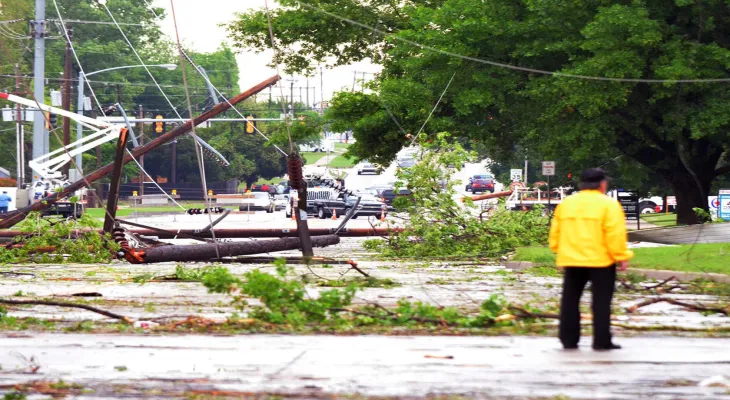Search here
Newspaper
Search here

Arab Canada News
News

Published: October 12, 2022
Ottawa anticipated launching the national adaptation strategy later this fall. There is a federal program aimed at providing provinces and municipalities with funding for disaster-resilient infrastructure projects, a program that is overcrowded and ran out of money years before its expiration.
The government launched the Disaster Mitigation and Adaptation Fund (DMAF) in 2018 with an initial budget of $2 billion over 10 years. It was later covered in 2021 with an additional $1.3 billion distributed over 12 years. The goal of the program is to make infrastructure more resilient to catastrophic weather events such as post-tropical storm Fiona – events that have become more frequent due to climate change. But as of September, $2.2 billion of the total program funding had been allocated, according to an infrastructure spokesperson.
The department confirmed that it received more funding requests than it can pay with money at the stage Jason Thistlethwaite from the University of Waterloo studies climate change adaptation and risk mitigation. He said DMAF was a good idea but its funding and implementation left "many communities wanting more".
He said: "Because municipalities rely on such small budgets ... they are in desperate need of funding to invest in risk reduction." Ryan Ness from the Canadian Climate Institute said he would only give the federal government a C grade on its efforts to invest in climate change adaptation so far.
Ness said: "Funding is really critical at this stage." "We have shown repeatedly the costs of being unprepared for such kinds of events and they are happening more frequently than ever in a weather world charged with climate change." Through DMAF, the federal government covers up to 40 percent maximum of the cost of a municipal project. The U.S. risk mitigation grant program covers up to 75 percent of costs. Thistlethwaite says the government should increase its share of the costs and make funds accessible to smaller municipalities that may have fewer resources to manage the application process.
He said: "Communities with resources or higher political voice often end up getting the funding." In a statement to CBC News, the Federation of Canadian Municipalities (FCM) said there is a "critical" need to improve small communities' access to this funding. The statement said, "There is much to be done to make communities of all sizes more resilient in the face of destructive storms, wildfires, and more."
In response to whether Ottawa plans to increase funding and facilitate access to DMAF, a spokesperson for Infrastructure Minister Dominic LeBlanc suggested there are other programs – including the flow of green infrastructure funding – available to address adaptation.
The spokesperson said in a statement sent by email that DMAF is "part of the Government of Canada’s work on climate change adaptation." The federal government is scheduled to launch a national climate adaptation strategy later this fall. Of the 72 projects approved under DMAF, only half a dozen are in Atlantic Canada and none at all in Prince Edward Island – where thousands were without power for weeks following Fiona.
Thistlethwaite said DMAF funding could have been used to bury electrical infrastructure to protect it from wind. He said: "We in Canada spend much more money on disaster recovery when it is too late to prevent it." The insurance bill from Fiona could reach $700 million – but a large amount of damage will not be covered.
Report: Investing in infrastructure can save billions A recent report by the Canadian Climate Institute estimates that Canada is facing annual disaster recovery bills of $5 billion by 2025 and $17 billion by 2050. But the report also points out that every dollar spent on climate change adaptation can save $5 to $6 in direct damage and generate between $6 to $10 in remaining economic benefits. Ness said: "The backlog is huge, and we have a lot to do. There is still a big gap between where we are and where we need to be."
The FCM has drafted a list of recommendations for the upcoming national climate adaptation strategy. It calls for more money for the adaptation fund and focusing on getting more dollars to smaller communities. Both Ness and Thistlethwaite said that while the national strategy is a good idea, it will need support through action.
Thistlethwaite said: "Unless they allocate funding for implementation strategies, it's just another report that will end up on the shelf."
Editing: Yusra Bamtraf
Comments